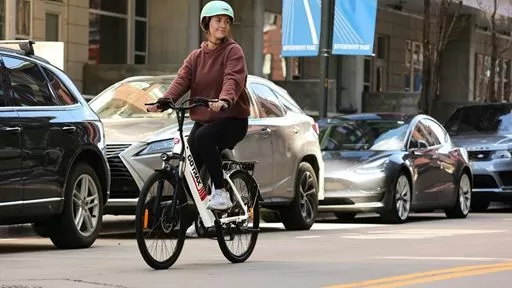As cities around the world continue to grow and expand, the issue of traffic congestion has become a major concern for both residents and governments. In an effort to alleviate this problem, there has been a significant increase in the replacement of cars in cities with more efficient and environmentally friendly options. This shift towards sustainable transportation is not only improving congestion, but also reducing the climate impact of urban areas. With the rapid technological development of these alternatives, the future of city transportation is looking brighter than ever.
One of the main reasons for the increasing replacement of cars in cities is the negative impact of traditional vehicles on the environment. The burning of fossil fuels in cars releases harmful greenhouse gases into the atmosphere, contributing to climate change. This has become a pressing issue in recent years, with cities experiencing extreme weather events and rising sea levels. As a result, governments and individuals are recognizing the need to reduce their carbon footprint and switch to more eco-friendly modes of transportation.
One of the most popular alternatives to traditional cars is electric vehicles (EVs). These vehicles run on electricity instead of gasoline, making them emission-free and significantly reducing their climate impact. With advancements in battery technology, EVs now have a longer range and faster charging times, making them a viable option for daily commutes. In fact, some cities have even implemented incentives such as tax breaks and free parking for EV owners, encouraging more people to make the switch.
Another promising solution to the issue of congestion and pollution in cities is the development of autonomous vehicles. These self-driving cars have the potential to greatly improve traffic flow and reduce the number of cars on the road. With the use of sensors and artificial intelligence, these vehicles can navigate through traffic more efficiently, reducing the need for individual cars and ultimately easing congestion. In addition, autonomous vehicles can also be electric, further reducing their impact on the environment.
In addition to these alternatives, cities are also investing in other forms of sustainable transportation such as public transit and cycling infrastructure. Public transit systems, such as buses and trains, not only reduce the number of cars on the road but also provide a more affordable and convenient option for commuters. Similarly, the development of dedicated bike lanes and bike-sharing programs has encouraged more people to cycle as a means of transportation, reducing both congestion and carbon emissions.
The technological advancements in sustainable transportation are not limited to just cars. The rise of ride-sharing services and car-sharing programs has also had a significant impact on reducing the number of cars on the road. With the convenience of booking a ride through a smartphone app, people are opting to use these services instead of owning a car. This not only decreases the number of cars on the road but also reduces the need for parking spaces, freeing up valuable land in cities.
Moreover, the development of smart city technology has also played a role in improving congestion and reducing the climate impact of cities. With the use of sensors and data analysis, cities are able to better manage traffic flow and optimize transportation systems. This has led to more efficient routing and reduced travel times, ultimately decreasing the amount of time cars spend on the road and their impact on the environment.
In conclusion, the replacement of cars in cities with more sustainable options is a positive step towards improving congestion and reducing the climate impact of urban areas. With the continued technological development of alternatives such as electric and autonomous vehicles, as well as investments in public transit and cycling infrastructure, the future of city transportation is looking greener and more efficient. It is up to us as individuals and governments to embrace these changes and work towards creating a more sustainable and livable environment for all.

